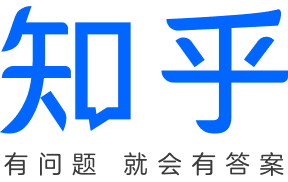3.19. Gen2 灰度相机深度流和运行MobilenetSSD模型
这个例子展示了如何在左侧灰度相机上运行 mobileetv2ssd模型 并运行视差深度结果,同时显示深度图和右侧灰度流,并将神经网络的边界框重叠。
3.19.1. 演示
3.19.2. 设置
请运行以下命令来安装所需的依赖项
Warning
说明:此处安装的是第二代depthai库
python3 -m pip install --extra-index-url https://artifacts.luxonis.com/artifactory/luxonis-python-snapshot-local/ depthai==0.0.2.1+c9a19df719cb668e438d6eafd193cdf60a0d9354 numpy==1.19.5 opencv-python==4.5.1.48
有关更多信息,请参阅 Python API 安装指南
这个示例还需要 mobileenetsdd blob ( mobilenet.blob 文件 )才能工作——您可以从 这里 下载它。
3.19.3. 源代码
可以在 GitHub 上找到。国内用户也可以在 gitee 上找到。
from pathlib import Path
import sys
import cv2
import depthai as dai
import numpy as np
# 首先获取模型
mobilenet_path = str((Path(__file__).parent / Path('models/mobilenet.blob')).resolve().absolute())
if len(sys.argv) > 1:
mobilenet_path = sys.argv[1]
# 开始定义管道
pipeline = dai.Pipeline()
# 创建左右灰度相机流
left = pipeline.createMonoCamera()
left.setResolution(dai.MonoCameraProperties.SensorResolution.THE_400_P)
left.setBoardSocket(dai.CameraBoardSocket.LEFT)
right = pipeline.createMonoCamera()
right.setResolution(dai.MonoCameraProperties.SensorResolution.THE_400_P)
right.setBoardSocket(dai.CameraBoardSocket.RIGHT)
# 创建一个将产生深度图的节点(使用视差输出,因为这样更容易可视化深度)
depth = pipeline.createStereoDepth()
depth.setConfidenceThreshold(200)
depth.setOutputRectified(True) # 校准后的流默认情况下是水平镜像的
depth.setRectifyEdgeFillColor(0) # 黑色,以更好地看到来自校正的切口(边缘有黑色条纹)
left.out.link(depth.left)
right.out.link(depth.right)
# 创建一个节点以将灰度图像转换为nn可接受的形式
manip = pipeline.createImageManip()
manip.initialConfig.setResize(300, 300)
# NN模型需要BGR输入。默认情况下,ImageManip输出类型将与输入相同(在这种情况下为灰色)
manip.initialConfig.setFrameType(dai.RawImgFrame.Type.BGR888p)
depth.rectifiedLeft.link(manip.inputImage)
# 定义一个将基于源帧进行预测的神经网络
detection_nn = pipeline.createNeuralNetwork()
detection_nn.setBlobPath(mobilenet_path)
manip.out.link(detection_nn.input)
# 创建输出
xout_depth = pipeline.createXLinkOut()
xout_depth.setStreamName("depth")
depth.disparity.link(xout_depth.input)
xout_right = pipeline.createXLinkOut()
xout_right.setStreamName("right")
manip.out.link(xout_right.input)
xout_nn = pipeline.createXLinkOut()
xout_nn.setStreamName("nn")
detection_nn.out.link(xout_nn.input)
# MobilenetSSD标签文本
texts = ["background", "aeroplane", "bicycle", "bird", "boat", "bottle", "bus", "car", "cat", "chair", "cow",
"diningtable", "dog", "horse", "motorbike", "person", "pottedplant", "sheep", "sofa", "train", "tvmonitor"]
# 管道已定义,现在设备已连接到管道
with dai.Device(pipeline) as device:
# 启动管道
device.startPipeline()
# 输出队列将用于从上面定义的输出中获取灰度深度帧和nn数据
q_right = device.getOutputQueue("right", maxSize=4, blocking=False)
q_depth = device.getOutputQueue("depth", maxSize=4, blocking=False)
q_nn = device.getOutputQueue("nn", maxSize=4, blocking=False)
frame_right = None
frame_depth = None
bboxes = []
labels = []
confidences = []
# nn数据(作为边界框的位置)在<0..1>范围内-需要使用图像的width/height对其进行归一化
def frame_norm(frame, bbox):
norm_vals = np.full(len(bbox), frame.shape[0])
norm_vals[::2] = frame.shape[1]
return (np.clip(np.array(bbox), 0, 1) * norm_vals).astype(int)
while True:
# 使用tryGet方法(非阻塞)而不是get方法来获取(阻塞),这将返回可用数据,否则返回None
in_right = q_right.tryGet()
in_nn = q_nn.tryGet()
in_depth = q_depth.tryGet()
if in_right is not None:
# 如果灰度帧数据可用,则将一维数据转换为HxWxC帧
shape = (3, in_right.getHeight(), in_right.getWidth())
frame_right = in_right.getData().reshape(shape).transpose(1, 2, 0).astype(np.uint8)
frame_right = np.ascontiguousarray(frame_right)
if in_nn is not None:
# 检测结果有7个数,最后一次检测后跟着-1位数,以后填充0
bboxes = np.array(in_nn.getFirstLayerFp16())
# 仅取-1位之前的结果
bboxes = bboxes[:np.where(bboxes == -1)[0][0]]
# 将一维数组转换为Nx7矩阵
bboxes = bboxes.reshape((bboxes.size // 7, 7))
# 筛选出置信度小于定义阈值的结果
bboxes = bboxes[bboxes[:, 2] > 0.5]
# 剪切bbox和标签
labels = bboxes[:, 1].astype(int)
confidences = bboxes[:, 2]
bboxes = bboxes[:, 3:7]
if in_depth is not None:
# 数据最初表示为平面1维数组,需要将其转换为HxW形式
frame_depth = in_depth.getData().reshape((in_depth.getHeight(), in_depth.getWidth())).astype(np.uint8)
frame_depth = np.ascontiguousarray(frame_depth)
# 使用OpenCV的applyColorMap方法给图像添加伪颜色,将应用颜色图以突出显示深度信息
frame_depth = cv2.applyColorMap(frame_depth, cv2.COLORMAP_JET)
if frame_right is not None:
# 如果图像不为空,请在其上绘制边框并显示图像
for raw_bbox, label, conf in zip(bboxes, labels, confidences):
bbox = frame_norm(frame_right, raw_bbox)
cv2.rectangle(frame_right, (bbox[0], bbox[1]), (bbox[2], bbox[3]), (255, 0, 0), 2)
cv2.putText(frame_right, texts[label], (bbox[0] + 10, bbox[1] + 20), cv2.FONT_HERSHEY_TRIPLEX, 0.5, 255)
cv2.putText(frame_depth, f"{int(conf * 100)}%", (bbox[0] + 10, bbox[1] + 40), cv2.FONT_HERSHEY_TRIPLEX, 0.5, 255)
cv2.imshow("right", frame_right)
if frame_depth is not None:
for raw_bbox, label, conf in zip(bboxes, labels, confidences):
bbox = frame_norm(frame_depth, raw_bbox)
cv2.rectangle(frame_depth, (bbox[0], bbox[1]), (bbox[2], bbox[3]), (0, 0, 255), 2)
cv2.putText(frame_depth, texts[label], (bbox[0] + 10, bbox[1] + 20), cv2.FONT_HERSHEY_TRIPLEX, 0.5, (0, 0, 255))
cv2.putText(frame_depth, f"{int(conf * 100)}%", (bbox[0] + 10, bbox[1] + 40), cv2.FONT_HERSHEY_TRIPLEX, 0.5, (0, 0, 255))
cv2.imshow("depth", frame_depth)
if cv2.waitKey(1) == ord('q'):
break
有疑问?
我们很乐意为您提供代码或其他问题的帮助。
我们的联系方式
还可以通过我们发布的视频和文章了解OAK








